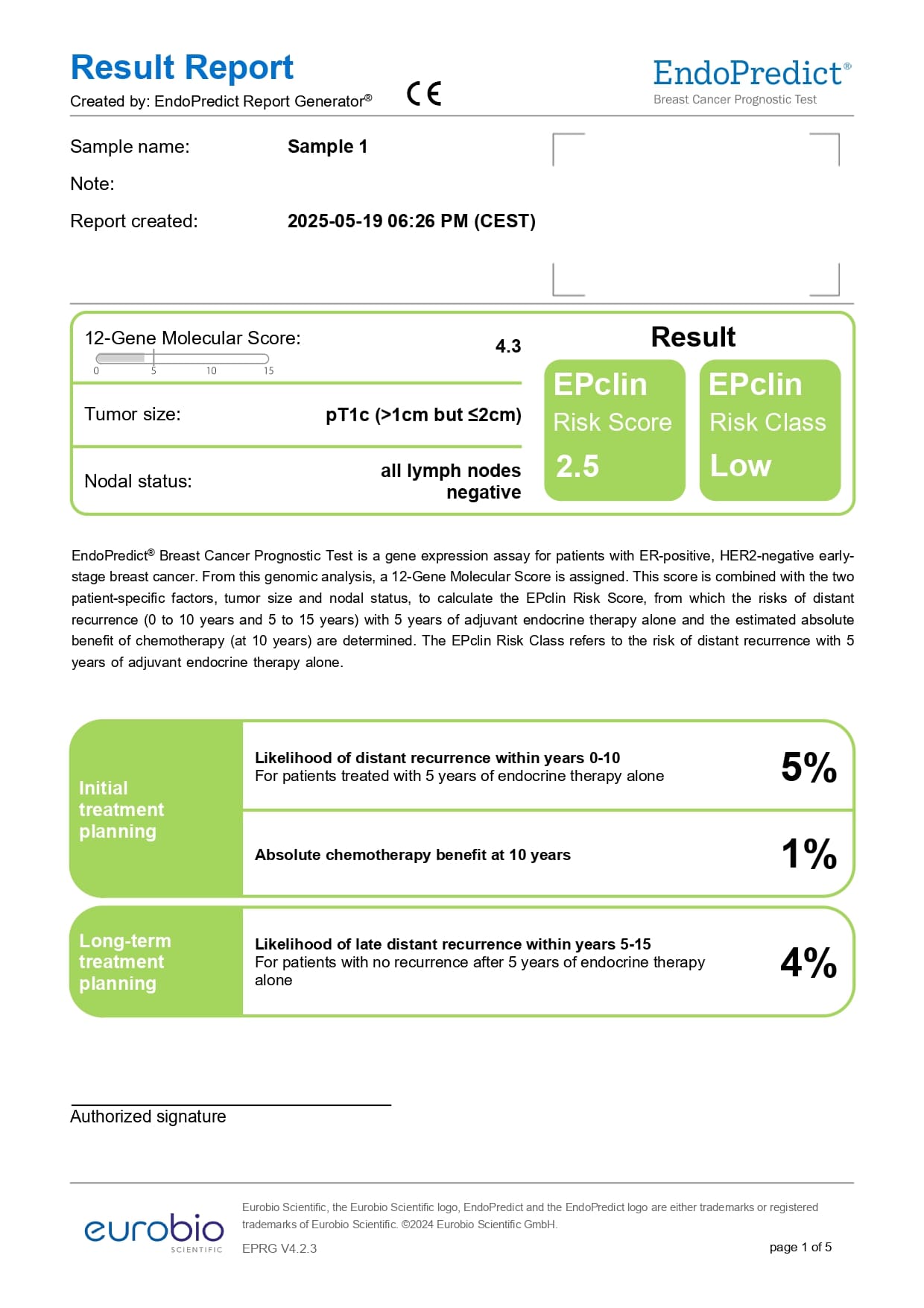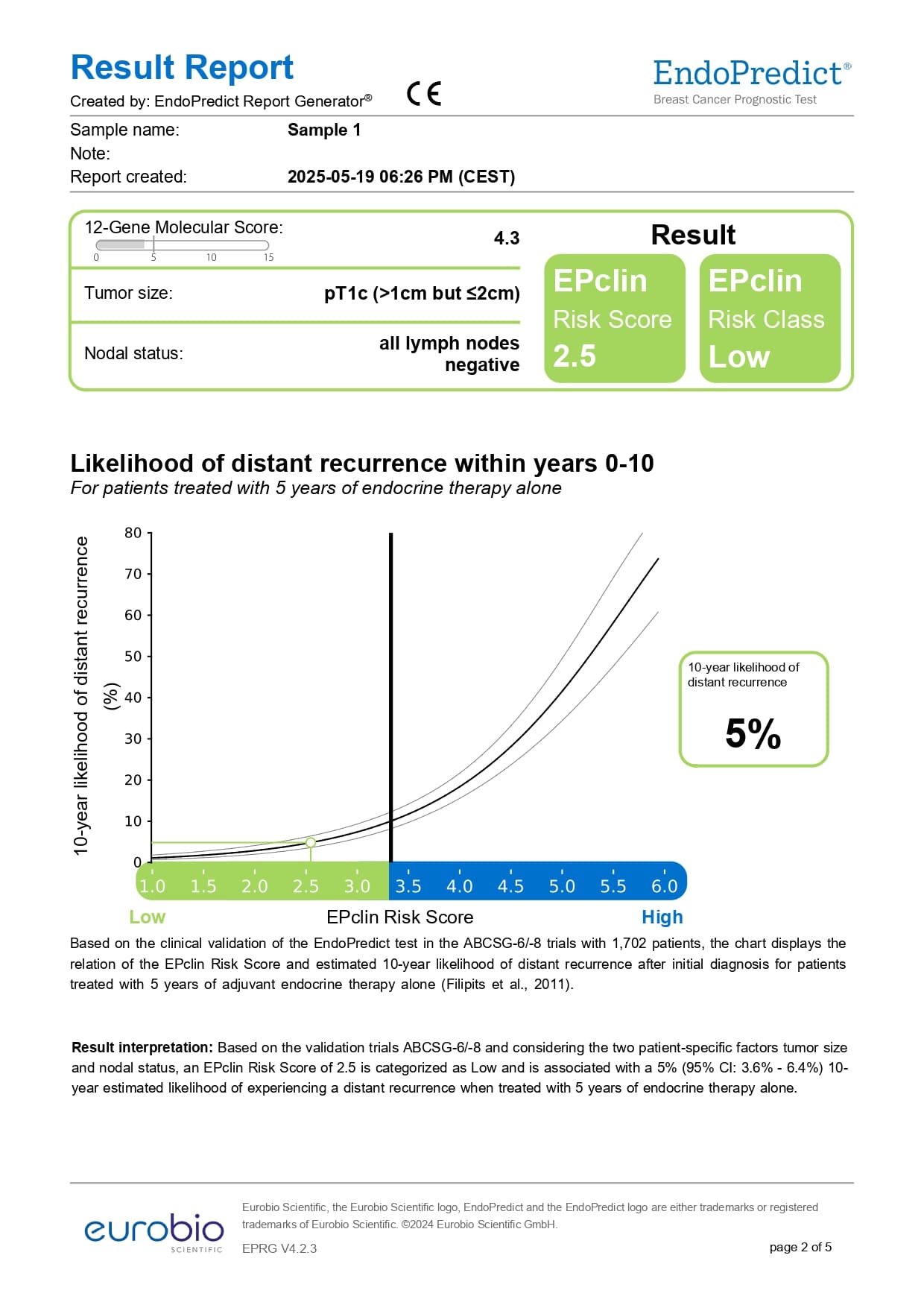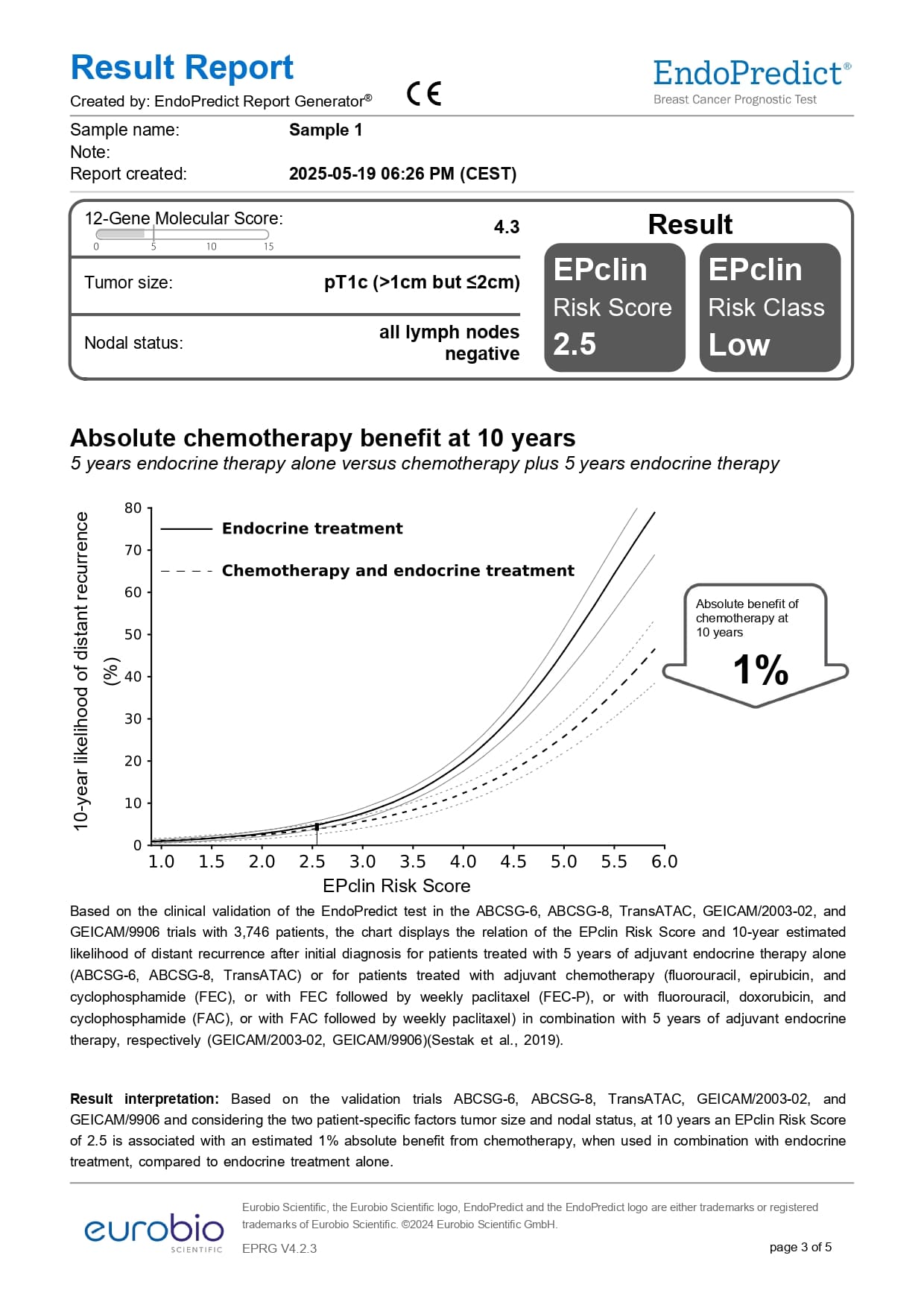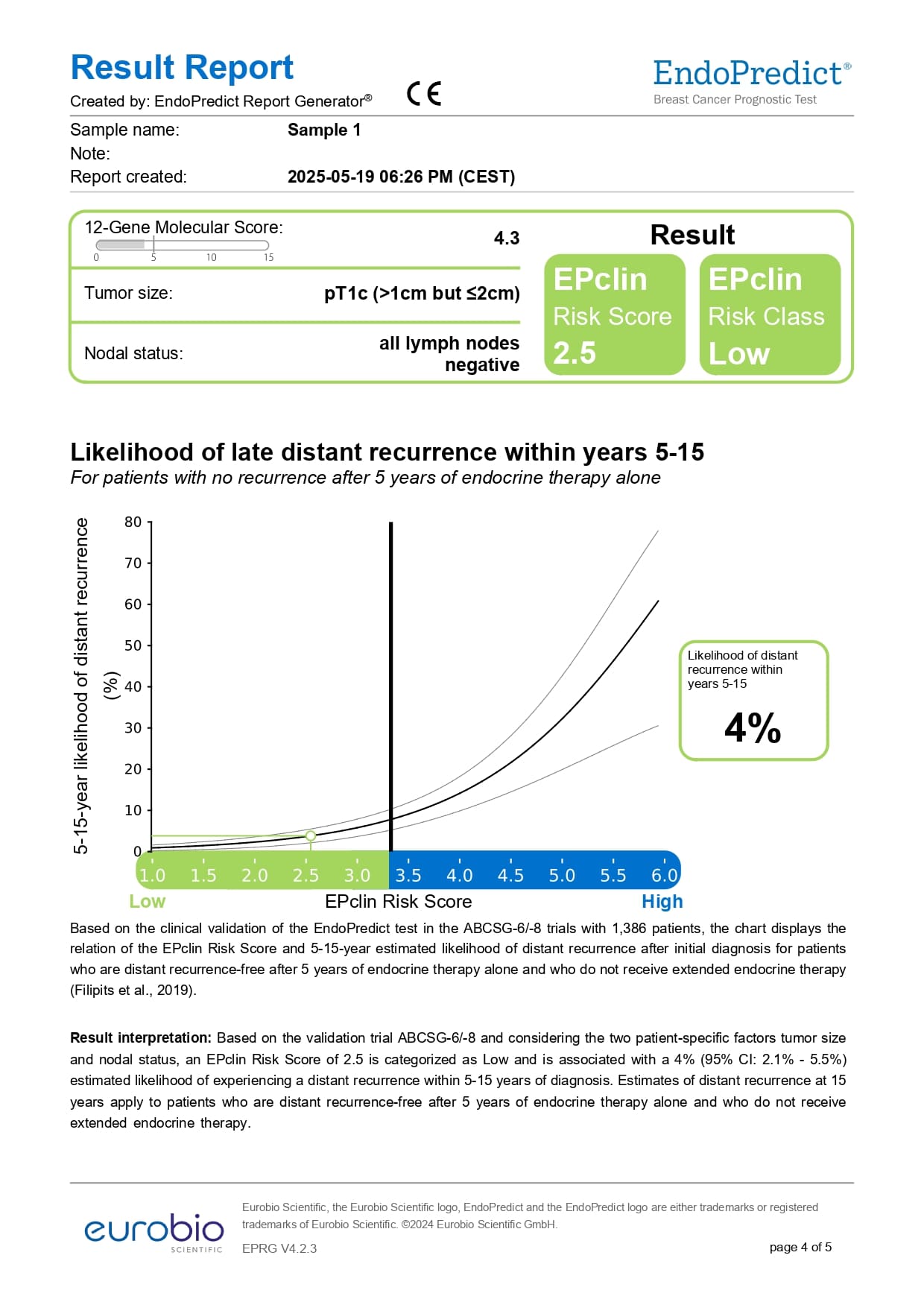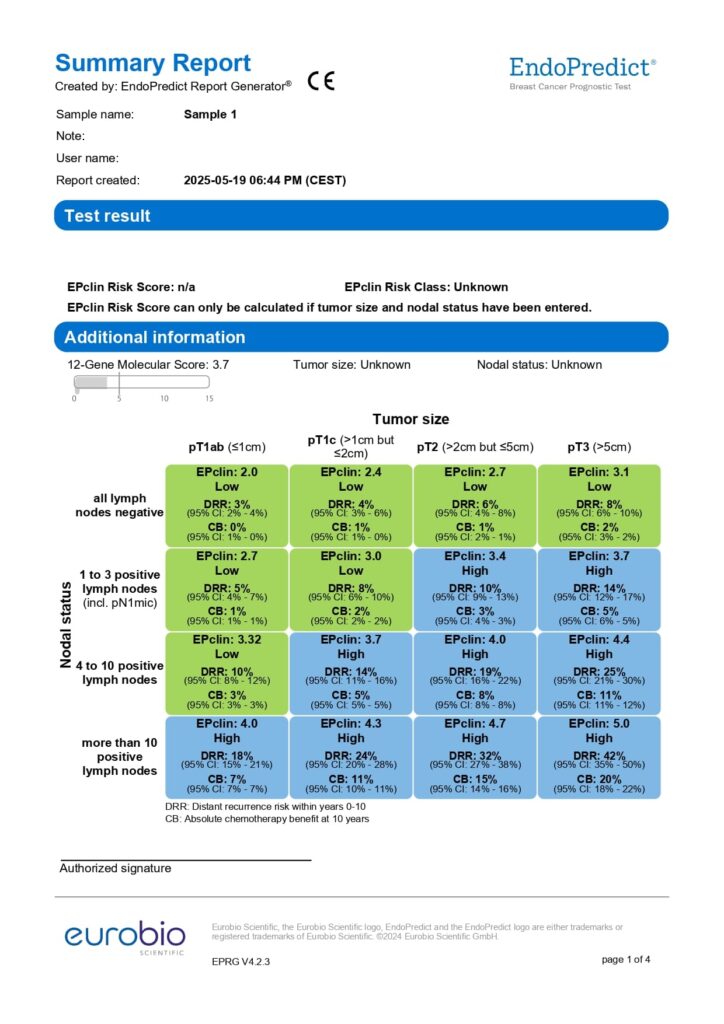Eurobio Oncology
EndoPredict®: Result Report
Understanding the EndoPredict® Report
The EndoPredict test report delivers clear, clinically actionable insights to help guide treatment decisions in early-stage ER-positive/HER2-negative breast cancer. By combining molecular data from the 12-Gene Molecular Score with clinical factors like tumor size and lymph node status, the report provides the comprehensive EPclin Risk Score – a powerful tool for determining an individual patient’s risk of distant recurrence and chemotherapy benefit.1,2,3
- The Report Answers Three Key Questions:
- What is the 10-year risk of distant recurrence?1
- Is adjuvant chemotherapy likely to benefit this patient?2
- Can extended endocrine therapy be avoided based on the late (5–15 year) risk?3
EndoPredict is a second-generation genomic test with a well-established and reliable cut-off between low- and high-risk groups – ensuring consistent interpretation over time.1 The results are delivered quickly, and the report format is intuitive, helping clinicians make confident, individualized decisions together with their patients.
Fast, Clear, and Actionable: The EndoPredict® Result Report
Click below to see an example report and what each page tells you.
Reliable Testing on Core Biopsy Tissue
Faster Results from Diagnostic Biopsy - No Need to Wait for Surgery
EndoPredict can be performed on diagnostic biopsy samples – as soon as the indication is confirmed clinically. Studies show a high correlation between results from core biopsies and surgical specimens, ensuring accurate risk assessment early in the treatment journey.4
Before pathological tumor size and nodal status are known, an initial Summary Report based on the 12-Gene Molecular Score will be be generated.
EndoPredict® Testing – Fast, Local, Reliable
The EndoPredict prognostic and predictive breast cancer test is performed in certified local laboratories, with results typically available within just a few days.
Physicians can conveniently order EndoPredict through a wide network of participating labs.
Use the link below to find participating labs and place your order.
Have questions? Feel free to contact us.

References
- Filipits M. et al.: A New Molecular Predictor of Distant Recurrence in ER-Positive, HER2-Negative Breast Cancer Adds Independent Information to Conventional Clinical Risk Factors. Clin. Cancer Res. 2011
- Sestak I. et al.: Prediction of chemotherapy benefit by EndoPredict in patients with breast cancer who received adjuvant endocrine therapy plus chemotherapy or endocrine therapy alone. Breast Cancer Res Treat. 2019
- Filipits M. et al.: Prediction of Distant Recurrence using EndoPredict among Women with ER+, HER2- Node- Positive and Node-Negative Breast Cancer Treated with Endocrine Therapy Only. Clin Cancer Res. 2019
- Müller B. M. et al.: Comparison of the RNA-based EndoPredict multigene test between core biopsies and corresponding surgical breast cancer sections. J Clin Pathol. 2012

